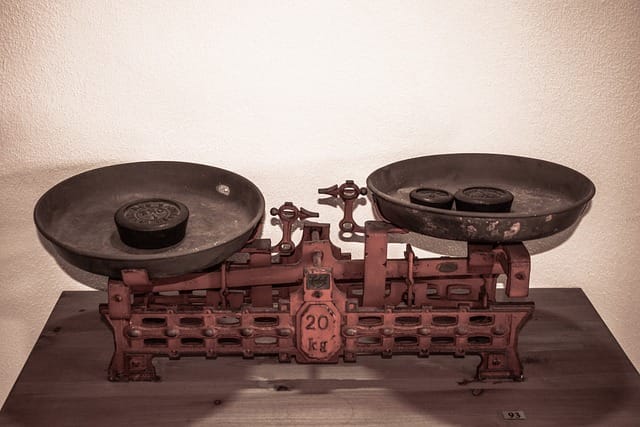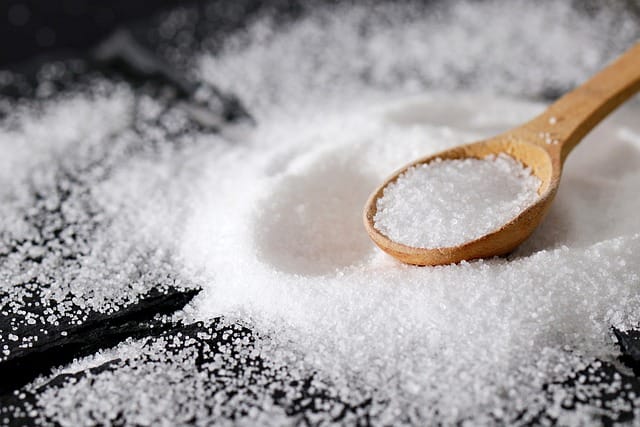Understanding how to measure ounces in a cup is an essential skill for anyone who enjoys cooking or baking. Whether you’re following a recipe or simply trying to portion ingredients accurately, knowing how to convert between ounces and cups can help ensure your dishes turn out perfectly every time. Many recipes, especially in baking, rely on precise measurements, and getting this right can make all the difference in the final result.
Cups and ounces are both common units of measurement in cooking, but they serve different purposes. A cup is a volume measurement typically used for dry or liquid ingredients, while an ounce is a smaller unit that can represent weight or volume, depending on the context. In the United States, a standard cup holds 8 fluid ounces, making the conversion straightforward, but understanding how to measure ounces in a cup can help you tackle various cooking scenarios more effectively.
In this guide, we will explore how to measure ounces in a cup accurately and provide tips on converting between these two units. We will also discuss the importance of precise measurements in recipes and share tools that can aid in the measuring process. By the end of this guide, you’ll be equipped with the knowledge and skills to measure ounces in a cup confidently, ensuring your culinary adventures are successful.
Understanding the Basics of Measurements
To effectively measure ounces in a cup, it’s important to understand the basics of both units. In the U.S., one cup is equal to 8 fluid ounces. However, when dealing with dry ingredients, the conversion may vary based on the density of the ingredient being measured. For example, a cup of flour weighs less than a cup of sugar because sugar is denser.
Measuring Liquid Ingredients
When measuring liquid ingredients, the process is quite simple:
- Use a Liquid Measuring Cup: Choose a clear liquid measuring cup marked with fluid ounce measurements.
- Pour to the Desired Level: Slowly pour the liquid into the cup until you reach the desired number of ounces. For instance, if you need 6 ounces, pour until the liquid reaches the 6-ounce mark.
This method is effective for ingredients like water, milk, and oil.
Measuring Dry Ingredients
Measuring dry ingredients accurately can be more complex due to varying densities. Here’s how to measure ounces in a cup for dry ingredients:
- Use a Dry Measuring Cup: Use a set of dry measuring cups. Do not use a liquid measuring cup for dry ingredients.
- Fluff and Spoon: Fluff the dry ingredient in its container with a spoon to aerate it. Then, spoon the ingredient into your measuring cup, filling it slightly over the top.
- Level Off: Use a straight edge, such as a knife, to level off the excess ingredient, creating a flat top. This ensures you’re measuring the correct amount.
For dry ingredients like flour or sugar, it’s important to use the proper technique to avoid compacting the ingredient, which can lead to inaccurate measurements.
Tools to Help Measure Ounces in a Cup
Using the right tools can simplify the process of measuring ounces in a cup. Here are some helpful tools to consider:
- Measuring Cups: Invest in a set of measuring cups, both liquid and dry, to accommodate different ingredients.
- Kitchen Scale: A digital kitchen scale allows you to measure ingredients by weight, which can be more accurate than volume measurements. This is particularly useful for baking, where precision is crucial.
- Conversion Charts: Keep a conversion chart handy to quickly reference how many ounces are in various cup measurements. This can be especially helpful when adapting recipes.
Common Conversions Between Ounces and Cups
Understanding the common conversions between ounces and cups can help you navigate recipes more easily:
- 1 cup = 8 fluid ounces
- ½ cup = 4 fluid ounces
- ⅓ cup = approximately 2.67 fluid ounces
- ¼ cup = 2 fluid ounces
- ⅛ cup = 1 fluid ounce
These conversions are useful when a recipe calls for measurements in ounces but your measuring cups are in cups.
Tips for Accurate Measurement
To ensure accuracy when measuring ounces in a cup, consider the following tips:
- Avoid Packing: For dry ingredients, avoid packing the ingredient into the cup, as this can lead to over-measurement.
- Use the Right Cup: Always use the appropriate measuring cup for the type of ingredient you’re measuring—liquid or dry.
- Check for Accuracy: If you’re unsure about your measurement, double-check using a scale for dry ingredients to ensure precision.
Common Ingredients and Their Measurements
Understanding how different ingredients measure in ounces and cups can further enhance your cooking skills. Here’s a breakdown of common ingredients and their approximate measurements:
- All-Purpose Flour: 1 cup = about 4.25 ounces
- Granulated Sugar: 1 cup = about 7 ounces
- Brown Sugar: 1 cup (packed) = about 7.5 ounces
- Butter: 1 cup = 8 ounces
- Water: 1 cup = 8 ounces
- Milk: 1 cup = 8 ounces
- Rice (uncooked): 1 cup = about 6.5 ounces
Knowing these conversions can save time and prevent errors when measuring your ingredients.
Using a Kitchen Scale for Precision
While measuring cups are handy, using a kitchen scale can provide even more accuracy, especially for dry ingredients. Here’s how to use a scale to measure ounces in a cup:
- Place the Bowl on the Scale: Start by placing your mixing bowl on the kitchen scale. Make sure to zero out the scale (tare it) so it doesn’t include the weight of the bowl.
- Add Your Ingredient: Slowly add the ingredient until you reach the desired weight in ounces.
- Convert to Cups: If you prefer to know how many cups that equals, use a conversion chart. For instance, if you’re measuring flour and you find you have 12 ounces, you can calculate that this is roughly 2.83 cups (12 ounces divided by 4.25 ounces per cup).
Using a scale eliminates guesswork and provides reliable measurements, especially beneficial when following complex recipes.
Understanding Measurement Techniques for Specific Ingredients
Different ingredients often require unique measuring techniques. Here are tips for measuring some commonly used ingredients:
How to Measure Flour
- Fluff and Spoon: As previously mentioned, fluff the flour in its container. Use a spoon to gently scoop it into your measuring cup until it overflows.
- Level Off: Use a knife to level off the top, ensuring no excess flour is packed into the cup.
How to Measure Sugar
- Granulated Sugar: Use the same fluff and spoon method, leveling off with a knife.
- Brown Sugar: When measuring brown sugar, press it firmly into the measuring cup before leveling off. This helps to pack it, ensuring you get the correct amount.
How to Measure Sticky Ingredients
For sticky ingredients like honey or molasses, lightly spray the measuring cup with cooking oil before pouring in the ingredient. This helps it slide out easily, allowing for a more accurate measurement.
How to Measure Other Common Ingredients
Here’s a quick guide on measuring other common kitchen ingredients:
- Baking Powder and Baking Soda: Use a measuring spoon to scoop, then level off with a knife for accuracy.
- Rice: Measuring rice can vary; generally, 1 cup of uncooked rice yields about 3 cups cooked.
- Liquids like Oil or Syrup: Use a liquid measuring cup, ensuring you check the measurement at eye level for accuracy.
Practical Application of Measuring Ounces in Cooking
Now that you understand how to measure ounces in a cup, let’s look at some practical applications:
Recipe Example: Classic Pancakes
Ingredients:
- 1 cup all-purpose flour (approximately 4.25 ounces)
- 2 tablespoons sugar (approximately 1 ounce)
- 1 tablespoon baking powder
- 1 cup milk (8 ounces)
- 1 large egg
- 2 tablespoons melted butter
Instructions:
- In a mixing bowl, combine the flour, sugar, and baking powder. Use the fluff and spoon method for the flour.
- In another bowl, whisk together the milk, egg, and melted butter.
- Pour the wet ingredients into the dry ingredients and stir until just combined. Be careful not to overmix.
- Heat a non-stick skillet over medium heat. Pour about 1/4 cup of batter (2 ounces) for each pancake onto the skillet.
- Cook until bubbles form on the surface, then flip and cook until golden brown.
This recipe illustrates the importance of accurate measurements, particularly in baking, where precision can affect texture and flavor.
How to Handle Conversions in Recipes
When you encounter recipes that use different measurements, it’s important to know how to convert. Here’s a quick reference:
- To Convert Cups to Ounces: Multiply the number of cups by 8. For example, 2 cups = 2 x 8 = 16 ounces.
- To Convert Ounces to Cups: Divide the number of ounces by 8. For instance, 16 ounces = 16 / 8 = 2 cups.
Conclusion
Knowing how to measure ounces in a cup is a valuable skill for anyone involved in cooking and baking. Accurate measurements can significantly impact the outcome of your recipes, ensuring that you achieve the desired flavors and textures. By understanding the differences between measuring liquids and dry ingredients, you can improve your cooking techniques and enjoy more successful culinary experiences.
In this guide, we’ve explored the methods for measuring ounces in a cup, the importance of using the right tools, and tips for accuracy. Remember that while a cup is a standard unit of measurement equal to 8 fluid ounces, the density of ingredients can affect how much they weigh. Having a good grasp of these concepts will enhance your cooking skills and confidence in the kitchen.
So whether you’re following a family recipe or trying out a new dish, knowing how to measure ounces in a cup will help you create delicious meals and desserts every time. Happy cooking!
External Links
- USDA Food Composition Databases – Access detailed information about the nutritional content of foods, including measurements.
- Cooking Conversion Charts – Explore various cooking conversion charts that help simplify measurements in your recipes.






